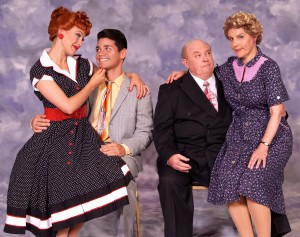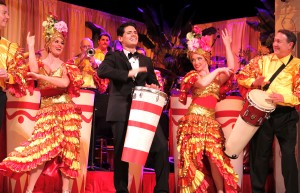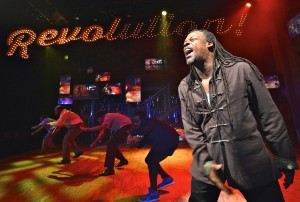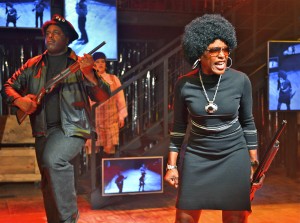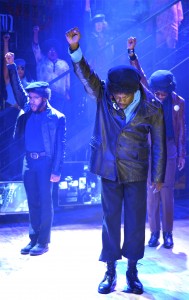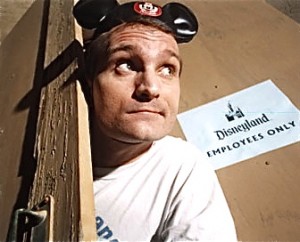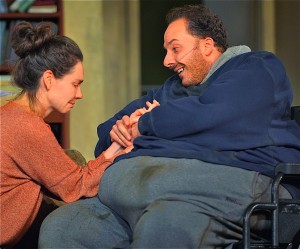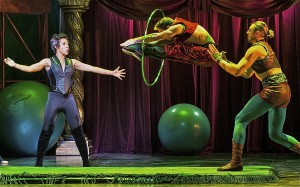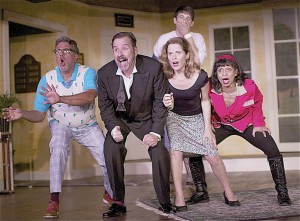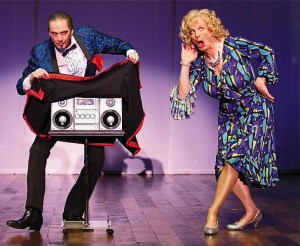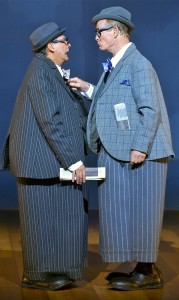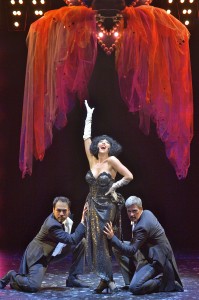[Woody’s [rating: 4.5]
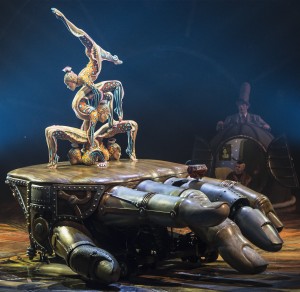
“Contortion” is a highlight of Cirque du Soleil’s “Kurios — Cabinet of Curiosities.” Photo by Martin Girard/shootstudio.ca
Back to basics.
That theme might best describe Cirque du Soleil’s “Kurios — Cabinet of Curiosities,” now ensconced in a tent behind A&T Park in San Francisco.
What’s different with this 30th anniversary show is that it strives less for innovation, more for familiar circus acts.
Umpteen acrobats. A jillion mid-air stunts.
Writer-director Michel Laprise has said he was aiming for “low-tech” astonishment — and a blending, of course, of fantasy and reality.
Mission accomplished.
Most of the dozen acts in the two-hour, time-traveling ‘Kurios” have touches of brilliance — despite most of the most being spectacularly unspectacular.
None of which fazed the opening night crowd one iota.
It applauded, cheered and stomped as loudly as audiences at any of the dozen Cirque shows I’ve seen.
Devices and costumes, as always, are amazingly inventive and somewhat mysterious, ranging from a huge metallic hand that converts into an underpinning for contortionists, to freakish nose cones that look like throwaways from an old show in which Madonna utilized them on a different part of her anatomy.
The music meanders, too — from the strains of an invented language, typical for Cirque performances, to traditional jazz, swing and electronic rock.
Tossed in for good measure are bluegrass, klezmer and classical passages.
My favorite interlude was the unique “Theater of Hands” segment in which a puppeteer lets his fingers do the dancing in comedic and poetic ways, projecting images unto a hefty floating balloon overhead.
In contrast, my seven-year-old granddaughter, my plus-one for the evening despite it being way beyond her bedtime, preferred “Invisible Circus,” where a clown leads an unseen troupe in numerous stunts while an equally undetectable lion roars from hither to thither.
The illusion’s sound effects are exquisitely timed.
Oldster and youngster both particularly enjoyed “ChaosSynchro,” staged bedlam with countless arms and legs flailing as two performers drum wildly on suitcases and whatever else’s handy, and its antithesis, “Continent of Doubles,” with a hunky, bare-chested male duo doing sensual, synchronized dancing on aerial straps.
The crowd, meanwhile, favored “Contortion,” with four females twisting their bodies into seemingly impossible positions.
It also reveled in “Upside Down World,” in which a guy negotiates table and chairs dangling from the tent-top while another hand-climbs perilously stacked chairs to meet him.
Burned into my memory, too, are weird curios that exit an oversized cabinet and come to life in a bizarrely mechanized world, and a trampoline that extends beyond than stage itself and lets gymnasts to bounce higher than I’ve ever seen.
My grandchild also was impressed by the three performing artists who greeted ticket-holders by prancing atop the big blue and yellow tent which that houses “Kurios,” which, not incidentally, features 19 nationalities in its cast and crew.
Speaking of other places, only 150 million devotees apparently have watched Cirque du Soleil shows in 300 cities on six continents.
I’m happy to be among them.
“Kurios — Cabinet of Curosities” plays in the big top behind AT&T Park in San Francisco through Jan. 18. Night performances, Tuesdays through Saturdays, 8 p.m. Matinees, Wednesdays, 1 and 4:30 p.m.; Fridays and Saturdays, 4:30, and Sundays, 1:30 and 5. General tickets: $53 to $135. Information: (800) 450-1480 or www.cirquedusoleil.com/kurios.
Contact Woody Weingarten at voodee@sbcglobal.net or check out his new blog at www.vitalitypress.com/.




